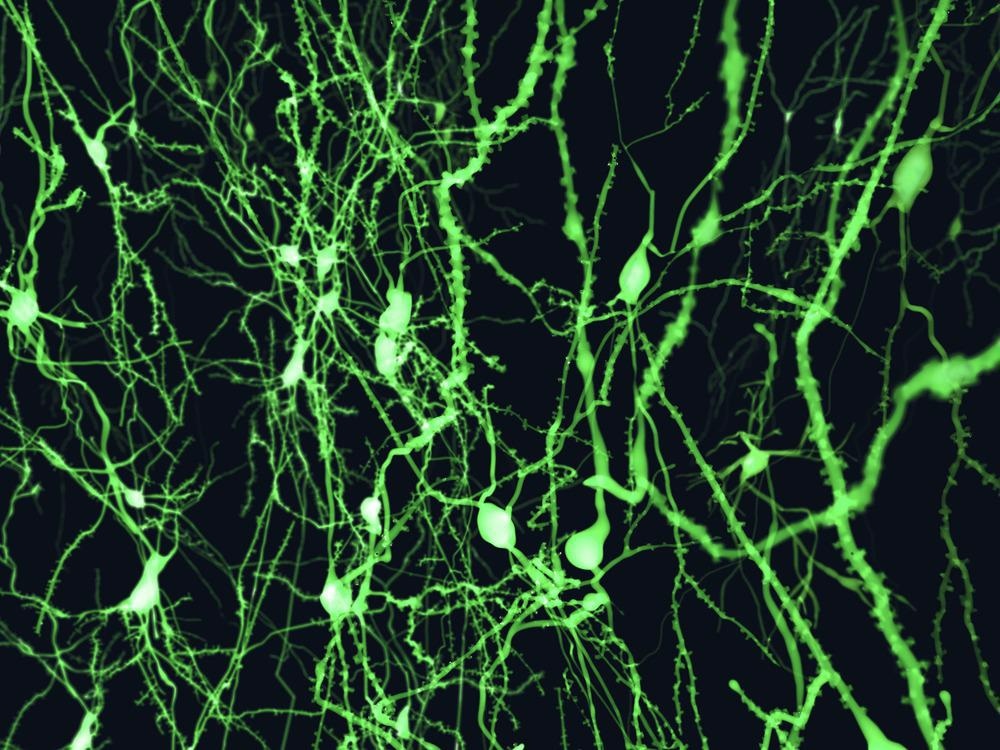Fluorescence spectroscopy covers a wide range of fluorescing particles such as atoms, molecules, etc., that fluoresce when irradiated with electromagnetic radiation. Atomic Fluorescence Spectroscopy (AFS) is specifically for atoms. Winefordner and Vockers invented atomic Fluorescence Spectroscopy in 1964 to determine the chemical concentration of solutions.

Image Credit: Juan Gaertner/Shutterstock.com
What is Atomic Fluorescence
Atomic Fluorescence occurs in two stages;
In Stage 1, a high-intensity monochromatic light is shined onto a sample, and the photons transfer energy to atoms putting them in a state of excitation.
In Stage 2, excited electrons absorb energy to a higher level. This is an unstable state, and the electrons drop back to their normal state emitting energy as photons.
The Electromagnetic energy emitted in this process is measured using a spectroscope, thus giving a method to measure the concentration of a specific component in the substance. This process is called Atomic Fluorescence Spectroscopy. The process is primarily used to detect metals (antimony, arsenic, bismuth, cadmium, germanium, lead, selenium, tellurium, tin, and zinc). It is very sensitive, producing results down to parts per billion.
How do you Measure Atomic Fluorescence
Samples to be analyzed may need some pretreatment to remove contaminants, and this is often dilution but may involve more sophisticated processes such as microwave digestion. The sample will then be atomized by one of three main processes flame, graphite furnace, or metal hydride generation.
- Flaming a sample involves the injection of a solution into a flame at 2300 degrees centigrade using acetylene or 2700 degrees using nitrous oxide. An obvious disadvantage of this system is the need to store highly combustible fuels.
- In a Graphite Furnace, the sample is deposited on a graphite tube and heated with ohmic resistance in three stages. Stage 1 at 60 – 100 degrees centigrade to dry the sample. Stage 2 is when the sample is heated to 250 – 290 degrees to remove any organics. Stage 3 at 2000 degrees to atomize the sample. Argon is often used as a transport gas because nitrogen is too reactive.
- In Vapour Hydride treatment, the sample is pretreated with acid and then reduced to produce the metal hydride and is transported to the detection cell via a vapor-liquid separator, where heat causes the metal and the hydrogen to separate. This method is more costly than other methods but is up to 3000 times more sensitive.
An Atomic fluorescence Spectroscope has a similar construction to an atomic absorption spectroscope. The Atomic Fluorescence Spectrometer detects the light emitted, not the light absorbed. The AFS will consist of
- A radiation source. This may be a tungsten halide lamp, deuterium lamp, hollow cathode lamp, electrode discharge lamp, or another type. The critical feature is that the electromagnetic source should be of constant high intensity, and fluorescence depends on the intensity of the light and the concentration of the sample.
- An atom reservoir (Flame, furnace, Etc. for Mercury, this could be a cold vapor cell)
- Monochromator. Sometimes monochromators are installed before and after the atom reservoir to ensure a monochromatic light source and a monochromatic emission for measurement.
- Detection System. The detection system is at ninety degrees to the radiation source to ensure that only emitted light is measured. The detector is usually solar-blind to not pick up any ambient light.
- Readout Device. There will be some form of electronic readout to record the intensity of the fluorescence.
Samples are treated to reduce interference. There are two principal types of interference. Spectral interference is where metals with similar wavelengths fluoresce, and the light interferes with the output, e.g., Cobalt and Mercury. The second type of interference is chemical interference, where a chemical reaction removes some of the target analytes.
Types of Flourescence
Several types of atomic fluorescence can be produced by this method;
Resonance fluorescence is where the atoms are excited and then emit light of the same wavelength as the light source when returning to their low energy state. This is the type of Fluorescence most often used for analysis.
Stokes Direct Line Fluorescence. In this case, radiation is emitted when the sample returns to an intermediate state of excitation, releasing light of a different wavelength. It then returns to the ground state without further emission. There is no chance of interference in this type, so this is an excellent way to measure concentration.
Stepwise Fluorescence is a type of Stokes Fluorescence. The sample moves to an intermediate stare without emission but then emits light when moving from the intermediate state to the base state.
Thermal fluorescence, sometimes known as Anti Stokes fluorescence, is where excitation is achieved using a light source combined with heat. The fluorescence is produced with higher energy and a shorter wavelength than the source.
Sensitized Fluorescence is where the excitation light energy is transferred from one atom to another.
The last two types of fluorescence are generally not used for analysis.
Advantages of AFS
AFS is generally more sensitive for metal analysis than adsorption technologies and is less prone to interferences. It is very good for detecting certain metals like lead, Cadmium, Thallium, Mercury, Arsenic, Antimony, Selenium, Tellurium, etc. It can be used to analyze solid, liquid, or gas samples. AFS instruments have a linear calibration over quite an extensive range. AFS is relatively inexpensive and can have a high sample throughput.
Disadvantages of AFS
Additional sample preparation is required, including chromatography before AFS, to get a good result. Some metals may be prone to interferences from certain other metals, and AFS is predominantly suitable for metal analysis only.

Image Credit: Julija Sh/Shutterstock.com
Uses of Atomic Fluorescence
Atomic Fluorescence Spectrometry instruments are manufactured by Hitachi, Shimadzu, Edinburgh Instruments, Spectrolab, PG Instruments, and many others. They are used in medicine to analyze blood, urine, nail, and hair samples. Atomic Fluorescence Spectroscopy is also used in the Pharmaceutical industry to check for contaminants in ingredients and fillers.
In Environmental Sciences, it measures metal analysis down to femtograms (10-15 grams). It is also a good tool in Geology and Mineralogy to determine what metals are in ores and rocks. It can also be used downstream in metallurgy to determine the composition of alloys. In food and Agriculture, it is used to check for contaminants in animal feed, meat, dairy products, tobacco products, and other areas. It is used extensively to check for metals in the water industry. It is used in the fuel industry to analyze petrochen=micals for metal contaminants.

 Continue reading about fluorescence spectroscopy here!
Continue reading about fluorescence spectroscopy here!
Further Reading
Last Updated: May 17, 2022